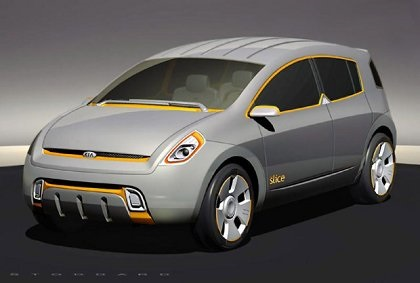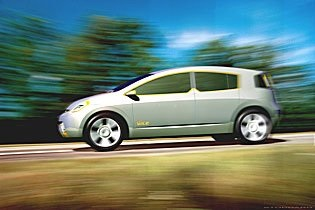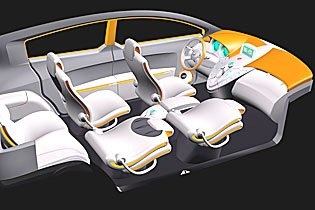The Kia KCD-I Slice challenges the limits of automotive design by blending creativity with functionality. Throughout history, we've seen designs that were initially dismissed, only to be celebrated later. This contrasts with practical solutions that were quickly forgotten as trends changed. While architecture tends to endure and shape its environment, vehicle design often struggles to maintain a lasting impact.
Architectural structures typically consist of supports and ceilings, and their designs are dictated by the loads they must bear. In the past, design styles often masked the rigid geometry of buildings. However, the rise of biological design was inspired by the natural world, showcasing innovative structures like the Ostankino TV Tower. Designers in the automotive field have similarly looked to nature, initially drawing inspiration from creatures like spiders to create dynamic forms.
Despite the potential for creativity, the boom of biostyle in vehicle design only emerged in the 1980s and was short-lived compared to the longer-lasting “Detroit Baroque” era. Economic shifts during this time likely contributed to this trend, as consumers with limited budgets often desired vehicles that conveyed aggression and luxury rather than harmony and beauty. This shift favored larger, more aggressive designs, particularly among small car manufacturers aiming to capture market share.
The success of South Korean automakers in Western markets marked a turning point, as they transitioned from aggressive strategies to a more balanced approach to design. The KCD-I Slice, showcased at the Detroit Auto Show, represents this evolution. Developed by a collaborative studio between Hyundai and Kia in California, the Slice reflects a growing recognition of the need to compete with established brands on design, functionality, and aesthetic appeal.
As these manufacturers established their presence in the automotive landscape, they faced the challenge of adhering to new industry standards. The KCD-I Slice symbolizes this shift, showcasing a fresh design philosophy that embraces both innovation and the evolving expectations of consumers.




































